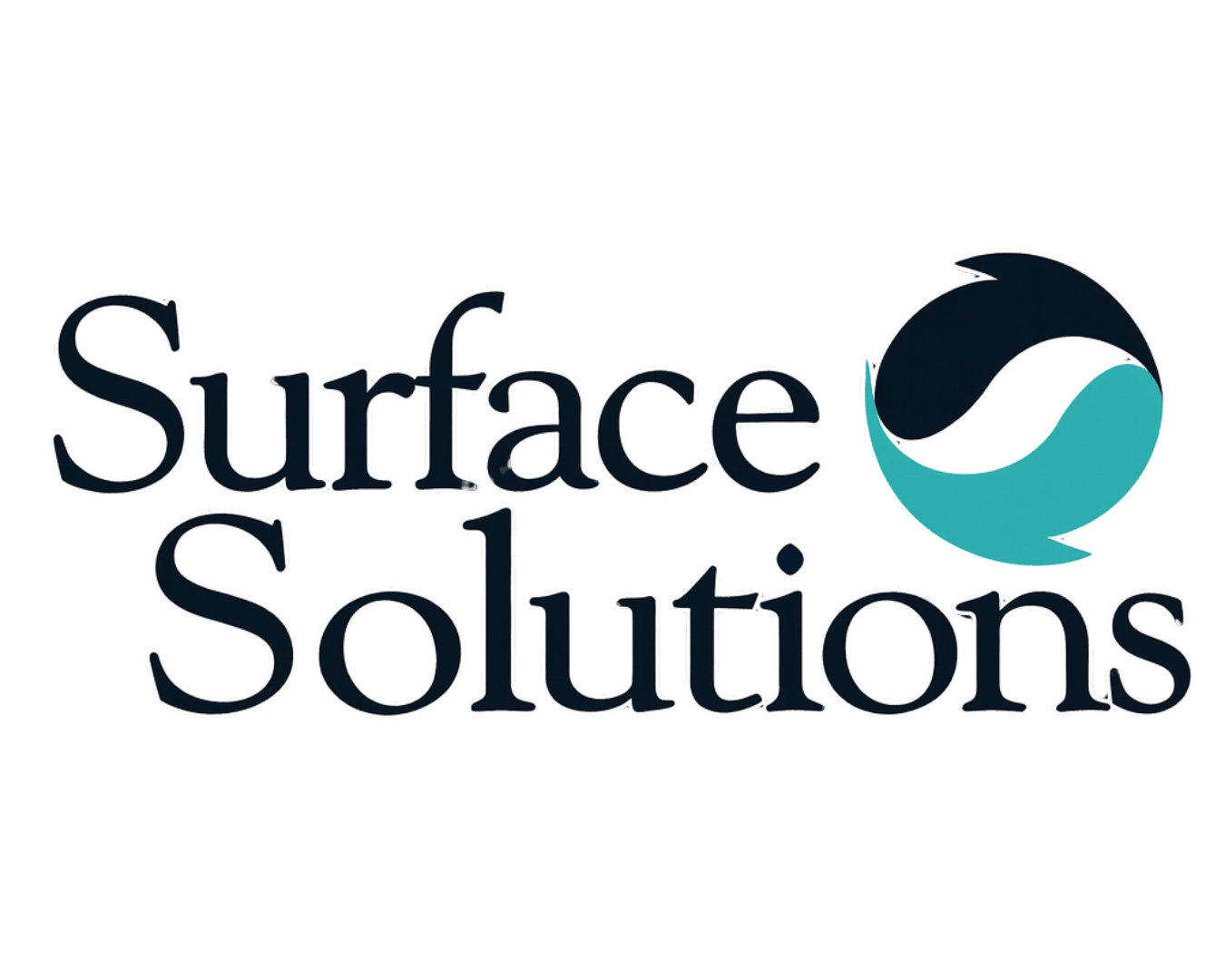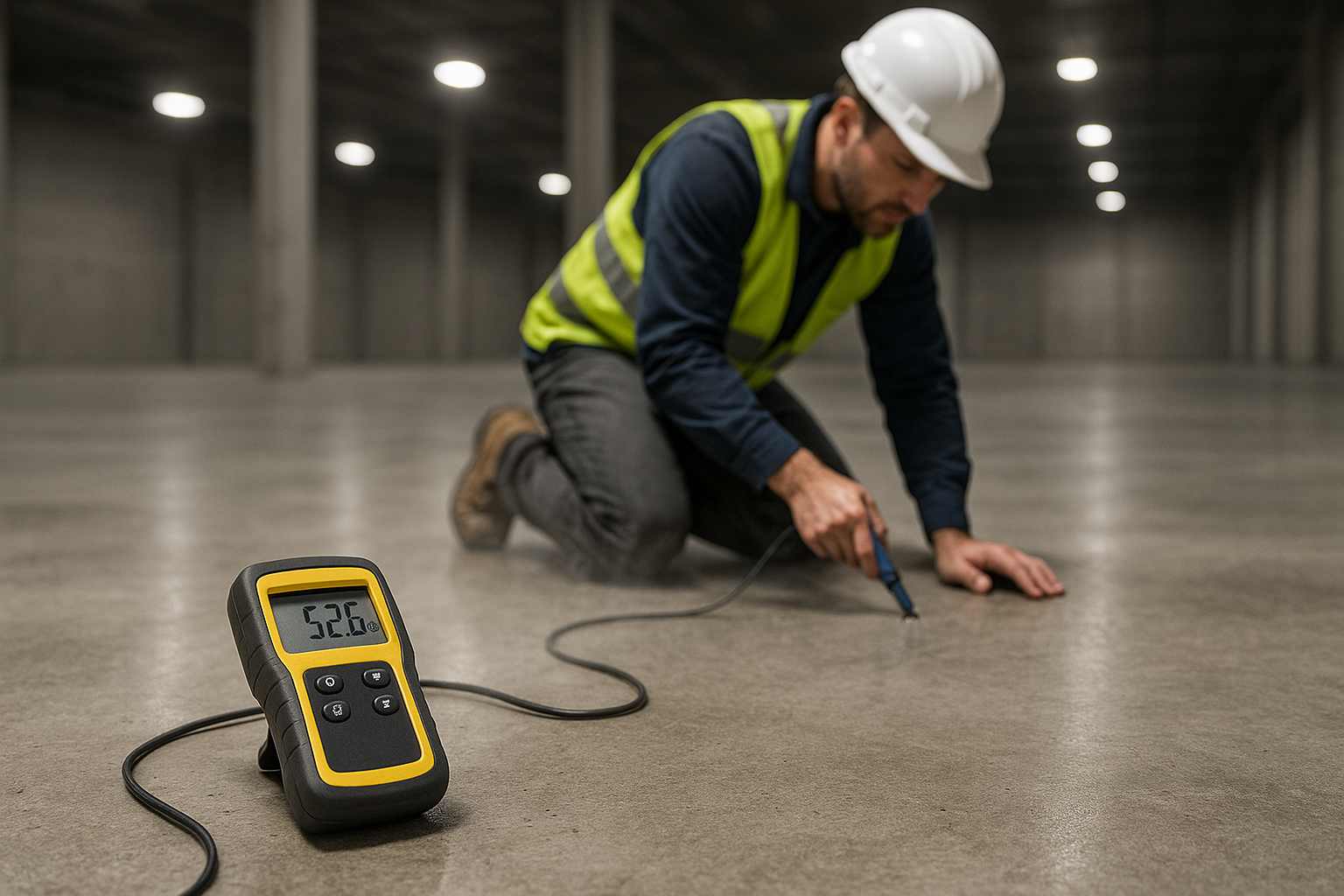The Science Behind Slab Moisture
Concrete is porous. Even after it’s cured, it continues to exchange moisture with the environment. When conditions are right, moisture vapor travels upward through the slab. If it hits a non-breathable coating (like epoxy) or sealer, it builds up pressure until the bond breaks.
Common issues caused by uncontrolled moisture include:
- Blisters and bubbles under epoxy
- White powdery efflorescence on polished concrete
- Adhesive failure for tile, carpet, or vinyl
- Mold growth under flooring systems
Why Moisture Problems Are on the Rise
- Fast-track construction: Slabs often don’t have time to fully cure before flooring installation
- Green building trends: Low-VOC coatings are less forgiving of moisture issues
- Climate extremes: Freeze-thaw cycles and high humidity raise MVER (moisture vapor emission rates)
How to Test for Moisture
We recommend one or more of the following ASTM-approved tests:
- ASTM F2170 – In-Situ RH Testing: Measures relative humidity inside the slab
- ASTM F1869 – Calcium Chloride Test: Measures moisture vapor emission rate (MVER)
- Surface pH Testing: Ensures alkalinity won’t attack adhesives or coatings
Knowing your numbers before you install flooring can save tens of thousands of dollars in remediation later.
Moisture Mitigation Solutions
Epoxy Moisture Mitigation Systems:
- 100% solids epoxy applied as a moisture-control primer
- Reduces MVER to acceptable levels for coatings and adhesives
- Can be completed in as little as 24 hours
Cementitious Underlayments:
- Applied over slabs to create a new, dry, flat surface
- Great for high-MVER slabs where coatings are risky
- Can be polished or coated afterward
Breathable Sealers (for Concrete):
- Allow moisture to pass while still providing surface protection
- Best for polished concrete installations where film-forming sealers might fail
Industries Most Impacted
- Manufacturing & Warehouses: Heavy coatings require strong bond integrity
- Retail & Grocery: Downtime from floor failure can cost millions
- Healthcare: Moisture issues can create infection control risks
- Food & Beverage: Moisture + organic debris = bacterial growth hazards
Long-Term ROI of Moisture Mitigation
Spending a little more up front on moisture control prevents:
- Costly coating re-installation
- Safety risks from peeling floors
- Warranty voids from improper prep
- Business interruption during repairs
It’s not just an insurance policy—it’s protecting the biggest surface investment in your facility.
Surface Solutions’ Approach
- Site Testing: RH, MVER, and pH levels measured
- System Design: Epoxy, urethane, or underlayment selected based on results
- Surface Prep: Shot blasting, grinding, or scarifying as needed
- Installation: Moisture control barrier installed before final finish
- Quality Assurance: Post-install verification for warranty compliance
Stop Moisture Before It Stops You
Call 877-CSTM-FLR
Email carolina@cstmflr.com Visit www.cstmflr.com
Moisture doesn’t go away—it just finds the path of least resistance. Let’s make sure your floor isn’t it.


.png)
